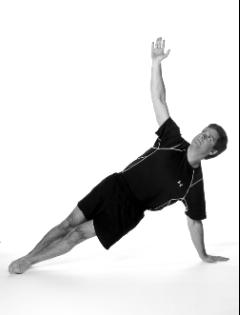If that has been the case this article is for you.
Perhaps you feel fine as long as you don’t run, train your shoulders, play golf or do some other activity you love to do. In most cases, this just doesn’t have to be the case. You need to find a balance. The type of balance I will be discussing here is structural or musculosketal balance. The vast majority of aches and pains are caused by structural imbalances of one or more muscle group and the joints that they connect to. As a result you develop a domino effect because an imbalanced group stress other muscles and joints placing further stress on your body.
Causes of such problems are vast why pulled muscles and joint imbalances place your body in a chronic stage of limited movement. One reason this damage occurs from repeated overstress such as:
- Over training certain body parts
- Repetitive movements with the same side of your body in sports
- Poor posture while working out
- Poor posture while sitting at your desk or watching TV
These continual patterns causes your body to muscle guard and lock up your movements resulting in chronic pain patterns worsening the imbalance areas over time.
Evaluate the following areas to help prevent these imbalances from occurring in the first place.
- Look in the mirror and check your standing posture. Are your shoulder rounded forward? Is one shoulder higher then the other? Is your head tilted to one side? Are your arms rotated inward or are your hands relaxed by your side?
- Once noted these postural imbalances, focus on correcting them by relaxing and stretching your muscles.
Do the same process before working out. Look in the mirror when you begin your movements and make sure that your back is straight and your muscles are relaxed before starting a single repetition and you’ll be on your way to a better workout.
Remember there are over 200 bones that are moved by more then 550 muscles in many directions and are complex it will take time to over come your imbalances, but once you do you will feel and see improvements as a result of your effort.

No comments:
Post a Comment